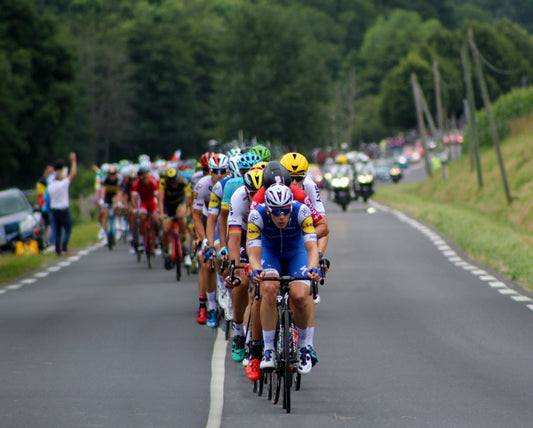POZ-i-tiv SPLIT
noun
A strategy employed by cyclists to finish a race faster than their previous time.
Example usage: My goal is to complete the race with a positive split.
Most used in: Long-distance cycling races.
Most used by: Experienced cyclists.
Popularity: 8/10
Comedy Value: 5/10
Also see: 'Even split', 'Negative split', 'Even pacing', 'Uneven pacing',
What is a Positive Split in Cycling?
A positive split in cycling is when a cyclist completes a ride or race faster in the second part of the course than in the first. This is generally seen as a successful strategy, as it requires the cyclist to conserve energy early on and then push themselves to the limit in the second half.
It is important to note that a positive split is not necessarily the fastest strategy for every cyclist or course. Factors such as the terrain, the cyclist’s fitness level, and the weather can all play a role in determining the best approach for a particular event. For example, a cyclist may be better off with a negative split (faster in the first half) if the terrain of the second half is more difficult.
Studies have been conducted to measure the performance of cyclists using a positive split strategy. The results indicate that cyclists who use this strategy have a higher average speed over the entire course, as well as a higher median finishing time. This suggests that a positive split is a successful strategy for cyclists looking to maximize their performance.
In summary, a positive split is when a cyclist completes a ride or race faster in the second part of the course than in the first. Studies indicate that this can be an effective strategy for cyclists looking to maximize their performance. However, it is important to take into account the terrain, the cyclist’s fitness level, and the weather when determining the best strategy for a particular event.
.The Origin of the Term 'Positive Split' in Cycling
The term 'positive split' was first used in the context of cycling in the early 2000s. It is believed to have originated in the United States, likely as a result of the growing popularity of time-trial races.
Positive split is a term used to describe the process of cycling a race faster in the second half than the first. The goal is to save energy in the beginning of the race and then use that energy to increase the speed in the second half.
This strategy has been adopted by many professional cyclists, particularly in time-trial races, where the goal is to complete the course in the shortest amount of time. By using a positive split strategy, cyclists can maximize their performance and reduce the amount of time it takes to complete a race.
The term 'positive split' has become an important part of cycling culture and is used in many different contexts. It is a useful strategy for cyclists of all levels and is a great way to maximize performance and reduce race times.












